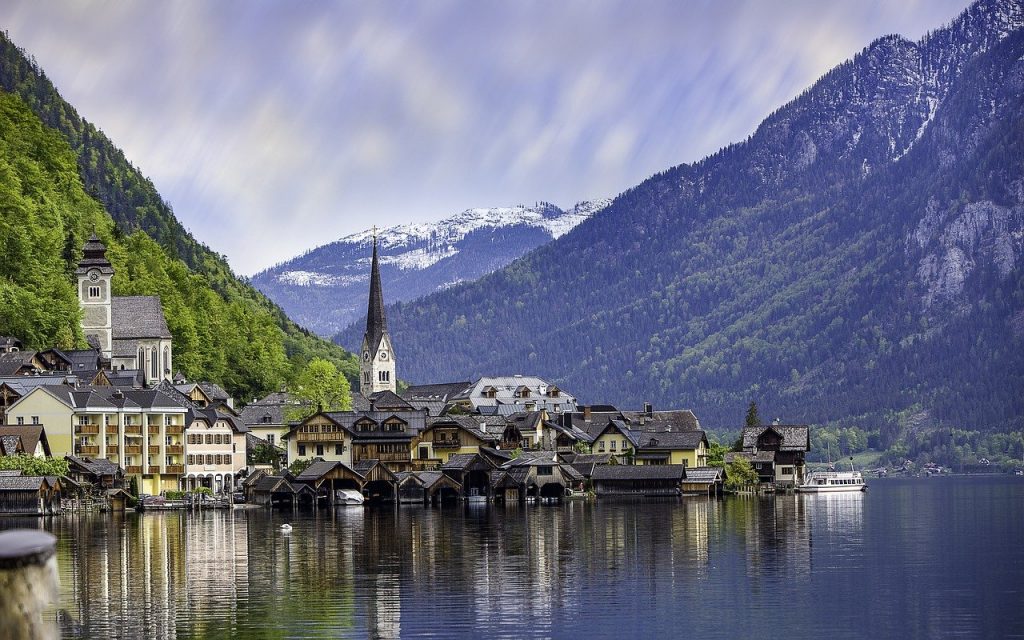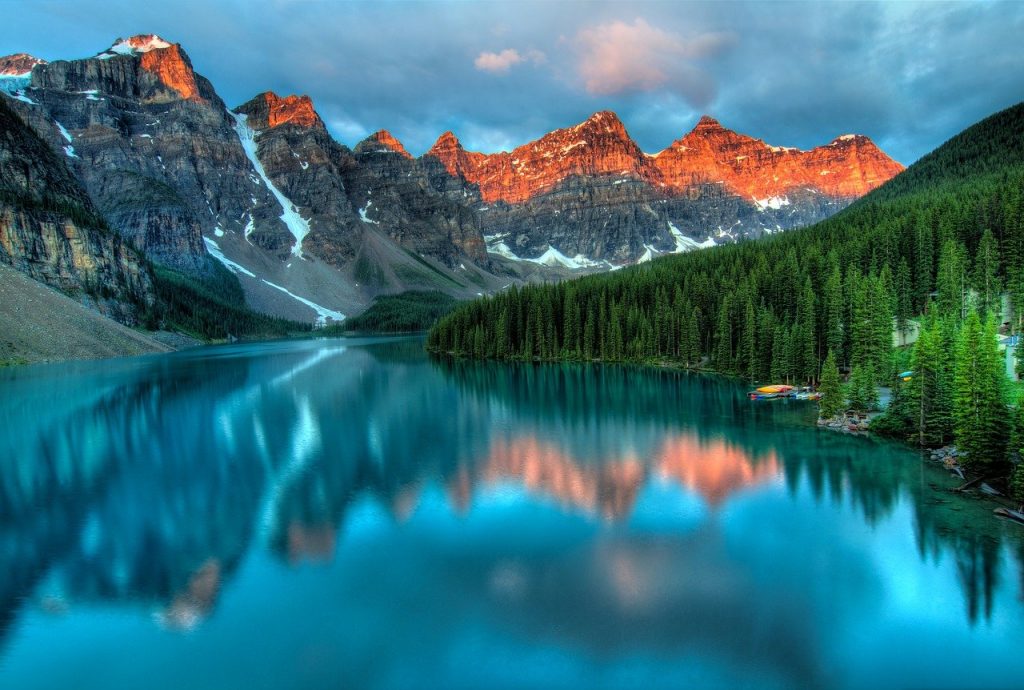Estimated reading time: 8 minutes
Table of contents
When you see a good photograph, you usually get the impression that the photographer took it on purpose. But how do you know that? What details in the photograph make it appear deliberate rather than random? That’s all I’ll talk about today.
Getting the Technical Aspects Correct
The first and most obvious way to make a photo feel intentional is to get as much of the technical side of photography as possible correct. This typically indicates that your subject is sharp, your depth of field is acceptable, your exposure is correct, and there isn’t too much image noise.
It is, however, possible to take good photos that purposefully do not do these things. Some photographers are looking for blurred subjects, light leaks, a lot of grain, and unusual exposures. These still count as getting the technical things right in terms of making your photos feel more deliberate! Because the important thing is that you’re doing them on purpose. There’s a big difference between blurring your subject to achieve an artistic look and blurring your subject because you accidentally set your shutter speed too slow. And most viewers can tell which is which.
In any case, the camera settings and other technical details should be chosen with care to complement your subject. When you do this, your photos will have a more deliberate feel to them.
Breathing Space and Clear Edges
Blocking an important subject with an unimportant subject is one of the quickest ways to take a careless photo. Perhaps you’re attempting to frame a distant mountain with some trees surrounding it, but one of the tree branches obscures the peak. Perhaps you’re attempting to photograph a bee on a flower, but the bee wanders too far to the other side and becomes partially obscured.
Those aren’t the best recipes for intentional photography. Instead, a photo almost always looks better when the main subject has some breathing room and isn’t cut off by anything else in the frame. And that includes the photo’s own edges! You can probably guess why a photo of a mountain would look unintentional if the image’s top edge decapitated the peak.
Here’s an example of a hastily composed piece that I didn’t put much thought into. As you can see, the moon has almost no breathing space against the top of the frame, and the mountain’s important reflection is obscured by a slew of unimportant rocks:
I moved to a different location to frame a second photo of the scene, and I focused more on breathing spaces and the edges of my composition. As a result, the image appears more deliberate:

Always watch the edges of your frame and the amount of space around your subject. Unless you have a good reason to do otherwise, try to give every important part of your photo enough breathing room in your composition.

Balanced Composition
When a photograph is balanced, it has a roughly equal distribution of visual weight from left to right across the image. In other words, imagine placing the image on a fulcrum, with each subject “weighing” a different amount based on its importance, and watching to see if it tilts to one side or stays centered.
There’s nothing wrong with compositions that are unbalanced and lean in one direction or the other. It is certainly possible to take well-balanced photographs. However, most “blindfolded photos” – where there is no deliberateness in the image – are likely to be imbalanced. That’s because, in any given scene, there may be only one balanced composition compared to a thousand imbalanced compositions; it’s just the way the world is set up.
So, if a photograph appears to have an even distribution of visual weight from left to right, it is very likely that the photographer purposefully composed it that way. Balanced photos are rarely the result of chance – and while imbalanced photos can look just as good, balance is usually the easier path to a photo that feels deliberate.

Few Distractions
Distractions abound in almost every photographic genre. Landscape photographers must contend with footprints, trash, and a variety of other man-made objects that they do not want in their photographs. Distracting backgrounds that draw attention away from the subject are a problem for portrait photographers. And so forth.
As with balance, a “random chance” composition is unlikely to be free of distractions. Images with a good flow and nothing to distract the eye from the subject were usually composed on purpose. Deliberate post-processing, such as dodging and burning subjects to emphasize or de-emphasize them, and even spot healing to remove distractions if you want to be more aggressive about it, can also play a role.
This all comes back to the idea of simplicity: nothing in an image should distract from your message. Photos with few distractions almost always feel deliberate and intentional.
Level Horizon

Something I notice a lot in otherwise good photos is that the horizons aren’t very level.
Sometimes this is due to the photographer not paying close enough attention in the field or during post-processing, resulting in an off-kilter photograph. Other times, the photographer may have paid close attention to a bubble level or virtual horizon in the field, but the scene’s perceptual horizon remains tilted! This can happen if the background of your photograph is slightly slanted in real life, such as a gentle hill. In any case, achieving a level horizon in the final image will appear more deliberate.
That being said, as with most of what I’ve discussed thus far, it is entirely possible to take good photos with a crooked horizon. It’s sometimes used in documentary photography to add tension and chaos. So I’m not saying that all of your photos must have a perfectly level horizon. A level horizon, on the other hand, is usually a sign of a deliberate composition, whereas a non-level horizon may not be.
Visual Puns
A visual pun of some kind in the image is one of the clearest signs of a deliberate composition, though it’s not something you’ll see all that often. A visual pun occurs when two or more seemingly unrelated parts of a photograph share something surprising or amusing.
Perhaps a tree and a mountain in your shot have strikingly similar shapes. Perhaps two unrelated people in a street photograph are dressed in identical dramatic outfits. Perhaps a moose is crossing the street next to a sign that says “moose crossing.”
Visual puns are common in some genres, such as street photography, but they are less common (or more subtle) in others, such as landscape photography. In any case, if you spot a visual pun in someone else’s photo, the odds are astronomically in your favor that it was a deliberate choice. It’s just not the kind of thing that happens by chance.
Post-Processing Choices

Finally, in addition to the field-based aspect of photography, your post-processing choices can convey a sense of deliberateness.
There are a few obvious examples, such as converting the image to black and white or cropping to create a panorama, that is almost certainly intentional on some level. Then there’s “excellent editing.” It’s difficult to describe but easy to recognize: no strange colors, no halos, and a good sense of emphasis on your various subjects.
It’s a pleasant surprise, but it’s unusual for all of this to look so good straight out of the camera. Even if it’s just boosting contrast or saturation in a flat raw file, there’s usually something you can do in post-production to improve an image. With a little careful editing, you can almost always make a photo look better.
However, the word “careful” is crucial. A gaudy Instagram filter or a hastily selected processing style can imply the polar opposite of deliberateness. To be sure, it shows that you processed the photo – but if that processing isn’t a match for the image, it will only heighten the photo’s sense of carelessness.
To put it another way, you can’t just slap a noir filter on an image and have a deliberate shot. Instead, your post-processing style should highlight an image’s best qualities without drawing undue attention away from your subjects.
Conclusion
Taking a photo that appears deliberate is all about avoiding “unhappy accidents” that can happen if you aren’t careful. The way to accomplish this is to do what I described in a recent article: take a close look at your subject when deciding on a composition. Concentrate on what’s in front of you and try to see beyond the surface. Then, take what you’ve noticed and incorporate it into the image as well as your emotional message.
When you do this, you may find that you don’t need to think about things like breathing space, balance, or distractions as much (although I still find that thinking about them is useful). The end result is almost certain: you’ll have a deliberate composition that conveys your message smoothly.
I hope this article helped in achieving that goal.
Note: If you want to make some adjustments to the photo just let me know. I can do it for you at a very low cost. You can hire me to edit your photo.
LATEST POST
- What is Midjourney
 Discover the capabilities of Midjourney AI, learn how to effectively utilize the platform, and explore the advantages and disadvantages of the Midjourney AI image generator across its different pricing options.
Discover the capabilities of Midjourney AI, learn how to effectively utilize the platform, and explore the advantages and disadvantages of the Midjourney AI image generator across its different pricing options. - Brand identity elements
 In the vast marketing universe, imagery is pivotal in establishing and nurturing a brand’s identity. A brand’s visual choices are not merely aesthetic decisions but strategic moves that can significantly influence perception and performance. This Picfixs article explores the intricacies of selecting imagery that complements and enhances a brand’s essence, ensuring it resonates with the… Read more: Brand identity elements
In the vast marketing universe, imagery is pivotal in establishing and nurturing a brand’s identity. A brand’s visual choices are not merely aesthetic decisions but strategic moves that can significantly influence perception and performance. This Picfixs article explores the intricacies of selecting imagery that complements and enhances a brand’s essence, ensuring it resonates with the… Read more: Brand identity elements - 100 Best Mountain Captions and Mountain Quotes for Instagram
 Ready to scale new social media heights? Look no further than this treasure trove of 100 exhilarating captions and quotes, handpicked for your Instagram mountain posts!
Ready to scale new social media heights? Look no further than this treasure trove of 100 exhilarating captions and quotes, handpicked for your Instagram mountain posts! - Symmetry in Photography: A Creative Approach with Examples
 Delve into the enchanting realm of symmetry in photography as we showcase mesmerizing examples on our website. Experience the allure of perfectly mirrored images!
Delve into the enchanting realm of symmetry in photography as we showcase mesmerizing examples on our website. Experience the allure of perfectly mirrored images! - 11 Quarantine Photoshoot Ideas to Try at Home for Amazing Photos
 Looking for unique photoshoot ideas during quarantine? Explore the 11 creative suggestions that will help you capture unforgettable moments at home.
Looking for unique photoshoot ideas during quarantine? Explore the 11 creative suggestions that will help you capture unforgettable moments at home.
RELATED LINK


